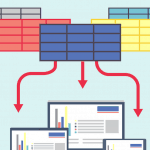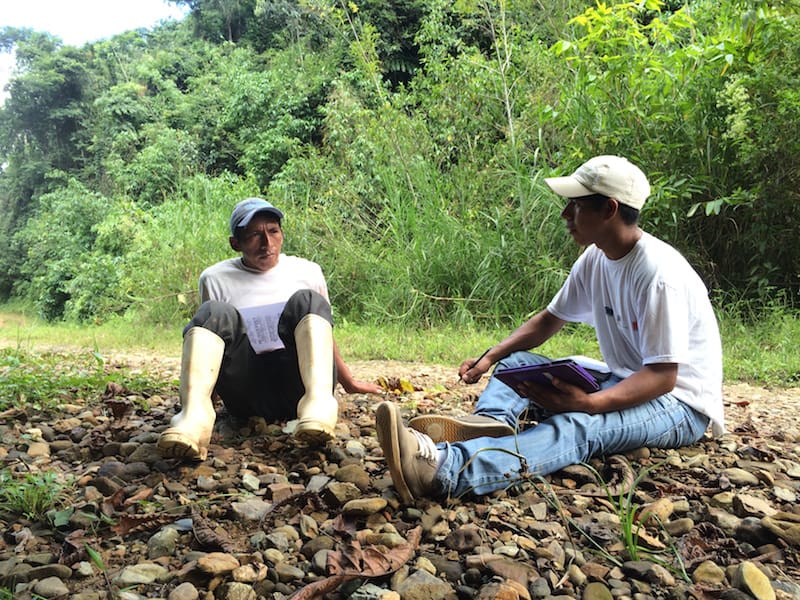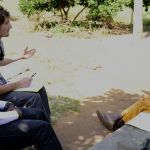NexThought Monday: Impact and the Science of Social Networks – More Bang For Your Buck
The basic principle behind network science is very simple: Things are connected, and the ways they are connected affect their individual and collective performance. Thus, the pattern of connections among neurons in the brain reveals the inner workings of cognition, just as gene combinations give us a clue about disease, or international trade between countries teaches us important lessons about politics and economic development.
But it’s not just neurons, genes or countries that create ties and build networks. Connections exist among any two or more entities: planets, airports, insects, cars, computers, books and ideas. And yes, thanks to the advent of the internet of things, even refrigerators and toasters are enmeshed in multiple networks glued together by physical and cultural forces.
People, of course, are connected too. Social networks constitute the fabric of our societies, they always have. Friends, family, neighbors, colleagues and fellow members of sports clubs or civil organizations, they all shape our most immediate and palpable social world. The study of social networks deals precisely with these relationships, how they emerge and decay, the patterns they form, and how they combine into small groups, organizations and communities.
The relevance for the social sector of these networks and the science behind them becomes evident once we move from a mindset of generating impact alone to generating impact more efficiently. When impact generation gives way to impact optimization, then understanding and activating the power of social relationships can become an invaluable tool for those committed to promoting, financing and managing social impact.
Today most of the focus in the social sector is placed on two main fronts: the resources flowing into the impact sector and impact measurement. The flow of resources seems to be on the right path. Impact investing funds are sprouting up, governments are getting on board, there is ever more research and education around the topic, social enterprises and B-Corps are growing more numerous and more sophisticated. As resources keep flowing, tools to track and manage impact are coming on-line: Acumen’s pioneering work around lean data, for instance, provides a promising paradigm for social enterprises that wish to generate impact data in a streamlined and commercially-useful manner; innovative platforms now offer social enterprises dedicated solutions for in-house impact management; new firms are making impact tracking possible even in the most difficult of environments. While these are undoubtedly positive developments, the question of impact optimization is rarely made explicit.
What do we mean by impact optimization? Put simply, it is about configuring organizational processes to achieve the optimal amount of (long-term) impact with a given resource base. It is about systematically analyzing how and where to invest resources to bring about a desired impact. Sounds pretty straightforward, right? Ask any social entrepreneur or impact investor, and they’ll tell you how complex an issue this is.
Network science offers a solution for providing insights about impact that would allow you to design and implement a data-based optimization strategy. While still mostly an academic endeavor, the science of social networks can teach us important lessons about how we generate impact and how to optimize it. Three lessons are of particular importance.
1.Social relationships explain individual outcomes relevant for impact
Social relationships are a crucial source of emotional support, love, companionship and solidarity. But they also provide good advice, child care, job referrals, financial aid, and other forms of valuable assistance essential to master both small daily tasks and cope with dire moments of need. The impact social relationships have on our well-being has been most forcefully documented through health research. In a 2010 review of 148 studies on social support and health, the estimated detrimental effect on the risk of death attributable to poor social relationships is stronger than the well-known negative impact of smoking, excessive drinking or obesity. So if – despite the risks to your health – you lead a sedentary life and keep up a fast food diet, vodka and cigars, make sure you choose your friends wisely! (For more examples about social networks and well-being take a look at the book “Connected” by Nicholas Christakis and James Fowler).
The message for impact optimization is clear. Investing in nurturing social relationships is a socially profitable strategy. It is also a cautionary tale. Impact-oriented projects that disrupt the social fabric around beneficiaries may create more harm than good, however high the gains in other aspects of people’s life may be.
2. The best way to reach and mobilize people is through other people
Social relationships are an effective channel for learning, imitation and influence. This is particularly relevant for social enterprises engaged in the business of changing people’s attitudes and behavior, or those pushing for the adoption of new products and practices. The role of social relationships for diffusion is particularly crucial in places where literacy and internet penetration are low. A now classic extensive review of decades of research on diffusion emphasizes that interpersonal ties are key to propagating new ideas, technologies and behaviors. Analogous to an infectious disease, these attitudes, behaviors and new products spread in a population from person to person. The process, however, is not as automatic as the flu; it takes more than sneezing. People are not simply passive conduits of new information. They comment, explain, and give advice on what to do with the new information they carry. That is why learning about something new through mass media or other impersonal channels is not as persuasive as finding out about it through your best friend or spouse.
What is perhaps more interesting about social relationships in diffusion processes is their power to change us. Our social relationships have the unique capacity to influence our way of thinking and acting. This can happen without us even noticing it, such as when a married couple starts adopting the same facial gestures and political views as the other. But it can also be used purposefully to ignite change. Peer-based interventions to quit smoking or promote exercise use relationships and positive/negative social incentives as a means of creating and maintaining individual behavioral change. (See the Healthy Buddies program to promote health in schools as an example.) The motivation to strengthen your ties to the community, or not to let down your peers or risk moral sanctions by people close to you, are indeed very powerful. Those active in the business of inclusive finance know this all too well: Schemes such as rotating savings and credit associations (ROSCAS) rely on these kinds of social incentives and normative control through social relationships for proper functioning and low default rates.
Thus, on the one hand, you can take advantage of networks to reach your target population. On the other hand, you should be aware that what reaches particular individuals will likely spill over to their social networks. It is a two-way street.
3. Key positions in social networks can be used to accelerate diffusion processes
Given the pattern of connections in a network, some individuals occupy strategic positions that can contribute to disseminating new information, products or practices through social relationships. These central and influential individuals come in various forms. There are those who are influential because they have numerous connections. They very quickly reach a considerable number of direct contacts. There are also those who stand at the crossroads of networks and serve as bridges between groups defined by geographic, socioeconomic, religious or other cultural divides – even if they lack an extensive number of direct contacts. In both cases, with the right stimulus, these key actors can morph into catalysts for change and speed the adoption of new products or behaviors in communities, small and large alike.
The effectiveness of key players as multipliers in social networks has been widely documented, and not only in viral marketing applications but also in the social sector. For example, a 2013 study showed that the penetration of microfinance loans in 43 villages in India depended on how central first-informed individuals in each village were. Reaching key actors first helped the microfinance institution increase rates of adoption. The authors of the study estimate reaching highly central individuals first could amount to roughly a 10 percent higher penetration in a given village compared to reaching non-central individuals first. Of course, if central people can accelerate diffusion they can also break it down. As documented in a 2014 study conducted in Bangladesh, negative information about nontraditional cooking stoves spread in social networks by influential individuals acted as a barrier to the adoption of this new product. The role of influential people in social networks with a negative opinion about the stoves could explain why their penetration rates in Bangladesh are still low, despite their apparently clear advantages over more traditional stoves in terms of energy consumption and health risks for users.
Putting these three lessons about social networks and impact optimization into practice requires one critical thing: data. The good news is that useful data about social networks can be collected cheaply using standard methods. To understand the networks around your clients, a paper-and-pencil standard questionnaire or a short interview will do the job. The bad news is that some of the information you may want to have about social networks is not as easy to collect. To map out key positions in a network you might need data on the whole community, not just a sample of individuals. This is usually expensive. However, it may just be a matter of time for cheaper alternatives to become available. Scientist are already experimenting with sensors in electronic devices as means to produce high-quality data on social relationships and whole networks (for example, see the book “Social Physics” by Alex Pentland). Considering the massive growth in smartphone penetration and the increasing popularity of wearable electronic devices worldwide, this more futuristic alternative to data collection on social networks may soon not be futuristic at all.
In a nutshell, social relationships are crucial in generating and managing impact. With the right data, social networks can be used systematically as allies for reaching and mobilizing people in efficient and effective ways. Of course, these lessons are not new. It is very likely that you have heard them already in some form or other many times in recent years. It may even be possible that they are a central aspect of your current impact efforts, if you are into inclusive finance, for example. And that is exactly the point. Because it’s not new, it may well offer a great deal for those interested in optimizing the impact they generate.
Andrés Cardona is advisor at Roots of Impact for social impact assessment and network analysis.
Rory Tews is program manager at Roots of Impact.
- Categories
- Impact Assessment
- Tags
- research



